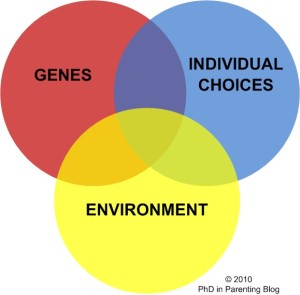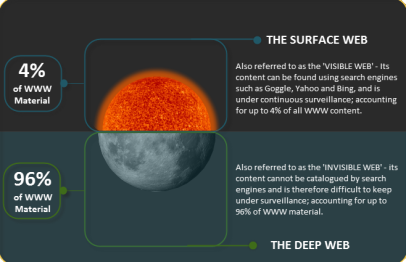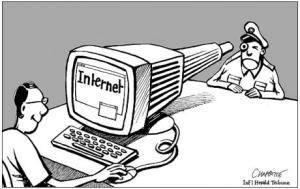Both social and scientific studies of paedophilia over the past 60 years have demonstrated that what constitutes ‘the paedophile’ has been shrouded in ambiguity. Historically, scientists and psychologists alike have continuously chopped and changed the definition of precisely what defines a paedophile. These days the mass media has a strong say in what a paedophile is – indeed – much of the general public’s social constructs of what defines a paedophile is made up through what they see and hear in the media. But thanks to scientists, psychological reports and in part the media, we are now beginning to discover what a paedophile is and who these paedophiles are likely to be.
Speaking in hindsight it is clear that defining paedophilia has been a struggle for criminologists, scientists and psychologists. In 1953 the American psychological Association [APA] defined paedophilia as a sexual deviation and sociopathic condition, in 1968 the definition was changed to a sexual deviation and non psychotic medical disorder, in 1980 it was defined as people who were only interested in sexual acts with pre-pubescent children, and in 1987 the definition went on to include adults who were interested in pre-pubescent children as well as other adults. Clearly the APA definition of paedophilia has evolved over a substantial time period and is obscure to say the least.
At the start of the new millennium the ‘Diagnostic and Statistic Manual of Mental Dissorders’ made what defines a paedophile even more puzzling. They described paedophilia as a sexual paraphilia stating that the defender has to be at least 16 years old, at least five years older than the victim – the victim is not older than 12 or 13 years and the defender has to have serious urges/fantasies that are causing them distress or that they have acted upon. Constant adaptions and conflicting definitions of paedophilia has led to unquestionable ambiguity surrounding whether a person is a paedohpile or not. Furthermore, it has also meant a lack of reliability for the aforementioned institutions researching paedophilia.
In 2007 the World Health Organisation described paedophilia as “a sexual preference for children, boys or girls or both usually of pre-pubertal or early-pubertal age.” Clearly the question of what paedophilia acutely consists of has baffled researchers for generations. However, the Sexual Offences Act has looked to address this issue, for a person to be a paedophile the act states: “A sexual relationship between an adult (over 18) and a child (under 16).” The Sexual Offences Act also describes a newly proposed diagnostic classification – a hebephile. A hebophile is described as a person who gains sexual gratification from contact with children aged 14-17. By law a hebophile is not strictly a paedophile but falls into what the public, government and the media seem to regard paedophilia as – again it is confusing.

Chris Jeffries was wrongly named as a paedophile and child killer and successfully sued several media organisations
It probably would not surprise anyone for us to state that generally the media dictate to us what type of person is and is not a paedohphile. Historically speaking paedophiles are middle aged/older men, below average looking and single. However, the social construct of who paedophiles are has changed profoundly in recent years. Thanks to research and the media it is now common knowledge that paedophiles can come from any walk of life – they can be adults who are old, young, rich, poor men or women. Over the past five years VIP members of the establishment have come under the spotlight of paedophile accusations – from MPs and celebrities to members of the royal family. Although this does not stop the media labeling the stereotypical ‘strange looking man’ as the paedophile e.g. Chris Jeffries. Clearly paedophile research has progressed in the last 50 or so years but is a person born a paedophile or do circumstances in their lives dictate it?
Whether it all boils down to science that is the question, recent scientific reports suggest that a paedophiles sexual attraction to pre-pubescent children may well be a biological condition in the brain. Further suggesting that paedophiles are born with the condition and it is almost certainly untreatable. In light of recent revelations which link paedophilia to the brain and natural biology, it stirs controversial debates as to how these individuals should be treated in society, particularly in the remit of law.
It goes without saying that such crimes against children are heinous. The question some have proposed is whether paedophiles should be subjected to harsher criminal punishment and more stringent restrictions but if research dictates that they are born with the condition and there seems to be no universal cure on the horizon is this really the way forward? Clearly the main aim of laws against paedophiles is the safety of the public and the strong safeguarding of children, the parental need to protect children from sexual predators.
Some circles propose that the legal system should veer away from the narrow approach of stigmatisation which deals with paedophiles after the crimes have been committed. Perhaps the law should concentrate more on making sure the paedophiles are prevented from offending in the first place and when they are caught then treatment procedures should be initiated, as they say often prevention is the best cure.
The idea that paedophilia is a condition in the brain has resurfaced in our generation. There is research coming out of Canada at the Centre for Addiction and Mental Health in Toronto which was recently visited by BBC reporters in their documentary about paedophiles. Research at the centre is led by Dr. James Cantor, who has been studying paedophilia and its association with the brain for more than 10 years. This new research indicates that paedophiles are biologically wired to be sexually attracted to children. The average IQ of the paedophiles in the group was 90, which Dr. Cantor describes as not noticeable on the street but enough that one might think the person was not very bright. His research further suggests a developmental difference exists in paedophiles before offences are committed.
The DSM-IV-TR – a diagnostic and statistical manual is used to create consistency in terminology and diagnoses of mental disorders. Paedophilia is classified within the category of mental disorders known as paraphilias, which are “recurrent, intense sexually arousing fantasies, sexual urges, or behaviours” that fall outside what one might consider societal norms. Paedophilia is sexual activity with a prepubescent child, generally aged thirteen or younger. Whereas a child sexual abuser is an individual who is attracted to, or engages in, sexual activity with a teenager underage who has undergone puberty, generally aged fourteen to eighteen, these distinctions are important.
It is believed that on average, paedophiles are approximately 2.5 centimetres shorter than the rest of the population. As for handedness, about ten percent of the regular population is left-handed, while in contrast about thirty percent of paedophiles are left-handed. The dominant hemisphere of the brain determines handedness. Paedophiles rarely seek help voluntarily, normally only coming in contact with mental health or medical professionals after they have committed a crime and enter the criminal justice system.
There are clear conclusions that can be drawn right now from the nature arguments, which can and should have legal implications. First, accepting the science as it stands; people are born with the condition of paedophilia. Furthermore, there is no cure. As of now, the condition in the brain cannot be changed.
It is increasingly becoming the case whereby victims are not ashamed of what happened to them and they don’t want others to ignore their abuse or be afraid to speak out. They speak out to prevent others from remaining silent that is more often the case. The renowned pianist James Rhodes revealed yesterday that he was repeatedly raped as a child and it took him 25 years to break his silence. He spoke of the toxic manipulation used by paedophiles to keep their victims from speaking out. They often threaten with ‘unimaginably bad things’ if their victims speak out. Charities have insisted that child sex abuse is the underlying cause for some addiction, self-harm, various disorders and even mental health problems. Victims often experience suicidal thoughts.
Only a relatively small number of abuse cases come to the attention of the authorities, but the report by the Children’s Commissioner for England Anne Longfield, is a comprehensive attempt to measure and understand abuse that is hidden from view. The report also highlighted that up to 70% of child sex abuse takes place within the family, 85% of said abuse goes unreported. The key issue here is what happens when the abuse is reported; many times victims are not believed, it is important to take that burden away from the children. The report also suggested that there might be as many as 450,000 cases of abuse which is far greater than the reported 50,000 recorded from April 2012 to March 2014. It’s conclusion that only one child in every eight facing sexual abuse comes to the attention of the authorities makes shocking reading. The statistics reveal how the crime is rampant across the country. According to a recent investigation there could be a quarter of a million paedophiles in the UK. Conviction rates are low despite the fact that technological advancement aids police investigations into these crimes.
How about when the abuser is a young woman? This question is rarely addressed. In the past two years, an increasing number of female teachers, tutors and teaching assistants have come before the courts accused of attempting to seduce and, in some cases, succeeding in seducing boys in their care. We have heard about female teaching assistants spared jail time despite admitting engaging in sexual activities and in some cases affairs with young under-age students. The shocking case of Marie Black springs to mind. Marie, 34, was found guilty of orchestrating a paedophile ring and she sexually abused children.
Some critics of the current legal system insist that if an offender is found to be “untreatable,” he should be sentenced to life in prison without the possibility of parole. While being admitted to a mental institution is substantially more expensive than imprisonment, some consider this a better alternative as it can address the issue rather than simply punish the crime. However it has been suggested that this method is not a sufficient enough format to adopt as there is no guarantee of child safety.
The social stigma for paedophiles starts with sentencing. While a paedophile who engages in sexual acts with children commits a serious crime, the paedophile is often treated more harshly than others who have committed similar crimes with adults. Many would argue that the effect of the abuse on the child is long lasting and more serious when the victim is a child therefore imposing a harsher treatment is understandable, but the science suggesting paedophilia is a biological ‘cross-wiring’ should force the lawmakers to reconsider. Such arguments stoke up the moral and ethical sides of the topic.
In the US that law states that, possessing child pornography carries a minimum five year prison sentence. The paedophile faces more time in prison than other sex offenders, and other criminals in general; because of a condition that science now indicates he was born with. Of course, the social stigma is compounded when the paedophile has served his criminal sentence. After the paedophile is released from prison, they are often forced to return to prison under ‘civil commitment statutes’ and must also comply with registration and notification statutes. Paedophiles, it seems are the most vulnerable of child abusers under these civil commitment and registration and notification statutes. Paedophiles in the US go through some of the most stringent of registration and notification requirements or they are thrown back to jail. They are always at risk of repeat offending; so it is easy to see the argument proposed in favour of life without parole. The notorious murderer and paedophile Mark Bridger was jailed for life, a welcomed outcome for all following the case. Post-trial I was forced to consider whether more preventative measures should be in place which will protect children. There should be more support services available to those abused but also interestingly, some suggested the same should be extended to the abusers. Online chat rooms and the dark web have long produced paedophile rings and networks, it is important to strengthen laws that will sap the appeal for suspected and potential child abusers. Although STOP IT NOW is available for potential abusers, it is not a strong enough deterrent but the argument has long-term benefits of protecting children because of the practical advice and therapy administered to the abusers.
Clearly the ambiguity surrounding paedophiles and paedophilia is intense. The general public’s feelings toward paedophiles and people suspected of being paedohpiles are hatred and rightly so. But if research is correct and paedophiles are ‘wired’ in the brains as paedohpiles when they are born then throwing them in jail for several years and then releasing them is not going to improve the situation. Rehabilitation is necessary. The act of paedophilia has existed within human life forever – it is not something that is going to be eradicated. Therefore more help and support is crucial for victims of paedophiles and allegations need to be taken much more seriously. Whether we want to beleive it or not paedophiles are in every section of our modern society and unless the issue of support for the victims and rehabilitation for the criminals is addressed then things are going to go from bad to worse.











